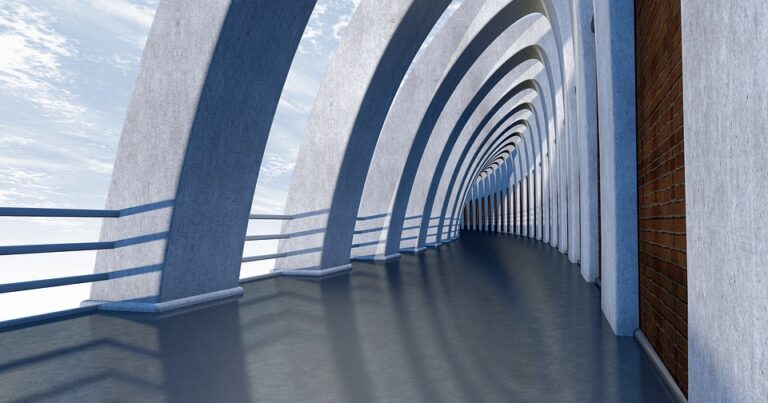
[ad_1]
Historical Significance
The Arab Gulf is home to a rich tapestry of architectural marvels that have withstood the test of time. From the towering minarets of the Grand Mosque in Muscat to the gleaming skyscrapers of Dubai, each landmark tells a compelling story of cultural heritage and innovation.
One such example is the iconic Burj Khalifa, the tallest building in the world. Its design draws inspiration from Islamic architecture, paying homage to the region’s heritage while symbolizing its modern aspirations. As you traverse the bustling streets of Abu Dhabi or Doha, you’ll encounter a blend of tradition and progress etched into the very skyline.
Unique Features
What sets these architectural wonders apart are their unique features that captivate the imagination. The intricate geometric patterns adorning the walls of the Sheikh Zayed Grand Mosque, the soaring arches of the Bahrain National Museum, and the futuristic design of the King Abdullah Petroleum Studies and Research Center exemplify the diversity and creativity inherent in the Arab Gulf’s architectural landscape.
Moreover, these landmarks serve as focal points for cultural exchange and community engagement, hosting events, exhibitions, and educational programs that enrich the lives of both locals and visitors.
Tangible Benefits
For tourists, exploring these architectural marvels offers a deeply immersive experience, fostering a profound appreciation for the region’s heritage and contemporary vision. The intricate details and grandeur of these landmarks are a testament to the skilled craftsmanship and resolute ambition that continue to inspire awe.
Similarly, for business professionals, understanding the architectural landscape of the Arab Gulf provides valuable insights into the region’s cultural values, business ethos, and societal dynamics, thereby facilitating meaningful connections and collaborations.
Real User Experiences
As you step into the opulent halls of the Museum of Islamic Art in Doha or ascend the observation deck of the Kuwait Towers, you’ll find yourself immersed in a world of wonder and discovery. These landmarks have the power to leave an indelible impression on every visitor, as shared by countless testimonials and personal anecdotes.
One visitor described the awe-inspiring beauty of the Qasr Al Hosn in Abu Dhabi as a transformative experience, deepening their understanding of the region’s history and tradition. Such heartfelt accounts underscore the profound impact these architectural marvels leave on those who seek to understand and appreciate them.
Technical Details and Contemporary Relevance
Delving into the technical intricacies of these architectural marvels reveals an unparalleled pursuit of excellence. The innovative use of materials, sustainable design practices, and advanced engineering techniques propel these landmarks into the realm of timeless masterpieces.
Furthermore, their contemporary relevance extends beyond their historical contexts, as they serve as beacons of progress, innovation, and cultural understanding. The Museum of the Future in Dubai, for instance, stands as a symbol of cutting-edge technology and human ingenuity, inviting visitors to contemplate the endless possibilities of tomorrow.
Comparisons with Alternative Landmarks
While architectural marvels abound across the globe, the Arab Gulf’s landmarks possess a distinct allure marked by a harmonious blend of tradition and modernity. The contrast between the ancient fortresses of Oman and the futuristic Lusail Iconic Stadium in Qatar showcases the dynamic evolution of the region’s architectural prowess.
Each landmark stands as a testament to the region’s unwavering commitment to preserving its heritage while embracing the promise of the future, setting it apart from other architectural wonders worldwide.
Location Details
Located at the crossroads of the Middle East, the Arab Gulf region encompasses a diverse array of architectural treasures waiting to be explored. From the scenic waterfronts of the Corniche in Abu Dhabi to the bustling urban center of Manama, each location offers a unique perspective on the region’s architectural heritage.
For an immersive journey through these landmarks, navigate effortlessly with the help of our interactive map, guiding you from one architectural marvel to the next.
Conclusion
Embark on a captivating journey through the architectural marvels of the Arab Gulf and discover a world where tradition and innovation converge in spectacular harmony. Whether you’re a tourist seeking cultural enrichment or a business professional forging meaningful connections, these landmarks offer an unparalleled blend of historical significance, unique features, and contemporary relevance, leaving an enduring legacy for generations to come.
FAQs
Q: What are the must-see architectural marvels in the Arab Gulf?
A: Some of the must-see landmarks include the Sheikh Zayed Grand Mosque in Abu Dhabi, the National Museum of Qatar in Doha, and the Burj Khalifa in Dubai.
Q: Are these landmarks open to visitors for exploration?
A: Yes, most of these architectural marvels welcome visitors, offering guided tours and interactive experiences to enrich your exploration.
Q: How can I learn more about the historical significance of these landmarks?
A: You can delve deeper into the historical significance through informative exhibitions, audio guides, and expert-led sessions available at these landmarks.
Q: What sets the architectural marvels of the Arab Gulf apart from other global landmarks?
A: The architectural marvels of the Arab Gulf stand out for their seamless integration of traditional elements with cutting-edge design, reflecting a unique cultural narrative.
[ad_2]